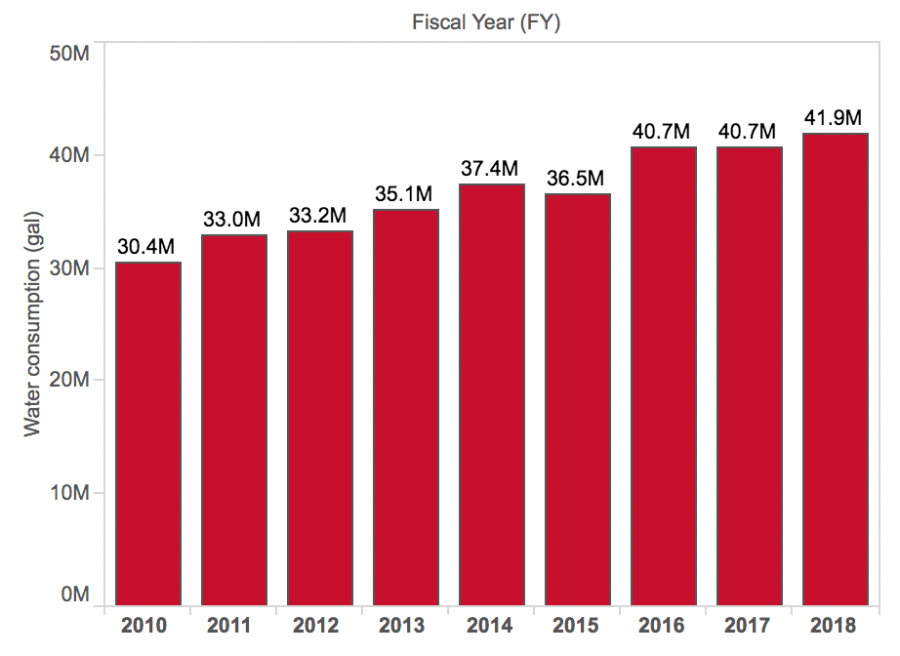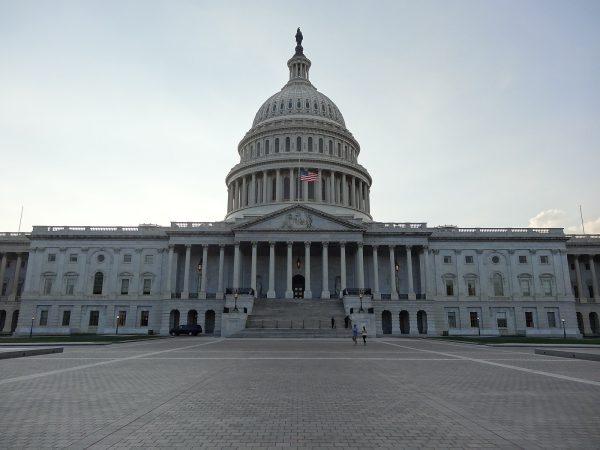College Reports Increasing Water Usage
Dickinson College has been using an increasing amount of water each year since 2010. This trend is, according to Associate Vice President of Sustainability and Facilities Planning Ken Shultes, is due in large part to weather related issues.
In an email, Shultes explained that, on average, the college uses roughly 40 million gallons of water per year, 25 percent of which is consumed by the Central Energy Plant and for irrigation purposes. According to the Dickinson College website, the Central Energy Plant is a “low-pressure steam energy plant,” which provides “steam and chilled water to two-thirds of the campus. […] The central energy plant boilers are dual-fuel, and can switch between heating oil and natural gas.”
“It is worth noting that both are impacted by the weather, such as drought and increasing summer temperatures and humidity,” Shultes stated, “I would argue that the trend in increased use is mainly attributable to these two areas.” Shultes noted that water usage affects the college carbon footprint “only marginally.” Despite this, “water consumption is an important element of our sustainable operations initiatives.” Shultes also noted that a major user of water on campus is the HUB, but that this “is not unusual considering that Dining Services is located in the HUB.”
According to the Dickinson College website, in 2018, roughly 41 percent of water used on campus was in student residence halls, with roughly 12 percent used by the Central Energy Plant, and roughly 18 percent used by athletics, which is inclusive of both the water used in athletics facilities and water used for irrigation.
Shultes noted however that the cost associated with water usage, both for consumption and the cost for disposal, has increased significantly over the past several years. He explained that the college, which receives its water from the Borough of Carlisle, is “charged a rate per gallon which covers both the consumption of the water, and the disposal of the water into the sewer system,” and that, over the past ten years, the rate charged for these services has increased by 40 percent. “The total cost of water and sewer in 2009 was $385 thousand, vs. $757 thousand in F[iscal] Y[ear] 2019,” Shultes explained “we are currently paying more for water and sewer annually than we are for natural gas and fuel oil combined.”
Shultes noted that, as of the first quarter of this year, college water consumption has decreased by ten percent, which “provides good reason to think we’ll be down this year.” He explained that much of this decrease is due to more than 35 percent reduction in water usage at the HUB, and the Central Energy Plant using 20 percent less water this year “due to a project we completed to make the Central Energy Plant’s chilled water system more efficient.”
Students expressed concern over rates of water usage. Giuseppe Collia ’20 suggested that the college “should be prioritizing drought and climate resistant landscaping.”
Shultes noted that the college has invested in water efficient plumbing fixtures in some buildings, which “has helped to keep our water consumption down, since showering and doing laundry are huge water consuming activities. “
Ainslie Davi ’22 a resident of the outdoor education house, said “[the] house focuses on sustainability. I think the increased water consumption on campus is something we should be worried about, even if it’s a minimal increase. With climate change occurring at an increasing rate, we need to be careful with how we preserve our planet.”
“When you expand this thinking to toilets and laundry and sinks, you hopefully start to understand that small changes by large numbers of students can have a substantial and meaningful impact on resources,” Shultes noted, explaining that, if half of students were to reduce their shower length by one minute each day, the result would be the use of over 300,000 fewer gallons of water per year.
We have an amazing example of how sustainable behaviors can impact utility consumption right here on campus at The Treehouse,” Shultes added, “treehouse students consume 60% less water, on the average, than students in all the residence halls.”





